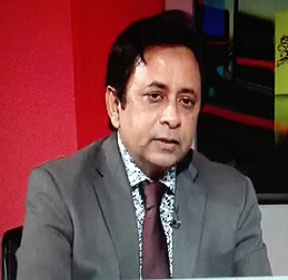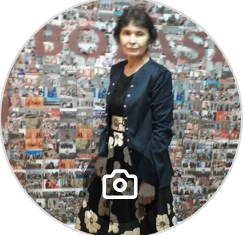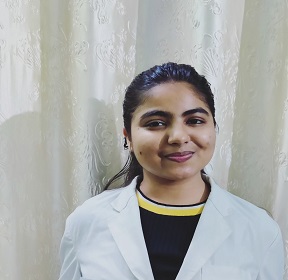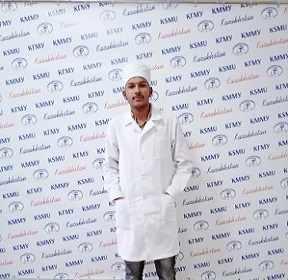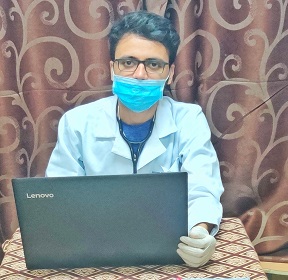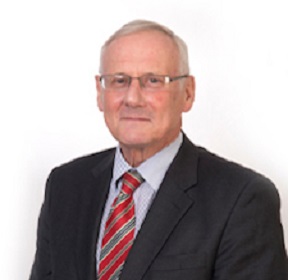Speakers
Abdullah Al Mamun
Evercare Hospitals Dhaka BangladeshTitle: Rationale of using common antifibrotic therapy in post Covid-19 fibrosis
Abstract:
Pulmonary fibrosis can occur in the absence of any clear-cut inciting agent & cause, that happened in IPF but it is more commonly devlope following acute and/or persistent lung injury/damage due to many causes such as : Connective tissue disorders Chronic granulomatous diseases, Medications, and different respiratory infections ( Virals & fungals). Available clinical, radiographic, and autopsy data has indicated that pulmonary fibrosis is central to severe acute respiratory distress syndrome (SARS) and MERS pathology, and current evidence suggests that pulmonary fibrosis could also complicate infection by SARS-CoV-2. Various mechanisms of lung injury in COVID-19 have been described, with both viral and immune-mediated mechanisms being implicated. Apart from these, additional factors could predispose individuals to severe lung injury and lead to an increased risk of mortality or pulmonary fibrosis in survivors. Currently, there are no approved therapies for SARS COV2. Trials are based on drugs that are already approved for other diseases, have acceptable safety profiles or have been effective in animal studies against the other two highly pathogenic coronaviruses. Apart from the potent use of antivirals to reduce the viral effects, the use of antifibrotic therapies could also be under consideration based on the pulmonary fibrotic disease observed after COVID-19 recovery Pirfenidone and Nintedanib are the two approved antifibrotic drugs for IPF. Despite having different modes of action, are both effective in attenuating the rate of lung function decline and are widely considered to improve life expectancy.
Biography:
SM Abdullah Al Mamun, MBBS, MD, FCCP, Senior Consultant & coordinator of Respiratory Medicine At Evercare Hospitals Dhaka, completed his graduation (MBBS) from Dhaka Medical College in 1994. In 1996, he started his Carrier as a research fellow in Bangladesh medical Research Council. In 1997, Dr. Mamun joined the Bangladesh health service after passing the BCS examination and in the same year enrolled in MD (Respiratory Medicine) course. In January 2000, he passed MCPS (Medicine from BCPS and in January 2003, he obtained MD degree in Respiratory Medicine from the National institute of Diseases of the chest and hospital Dhaka. He attended many international seminars in Respiratory Medicine and presented many scientific papers in home and abroad. In 2006, he honored with FCCP from American college of chest physician. In 2009, he honored with APSR award and went for short fellowship (2 month) in Respiratory and critical Medicine in National university Hospital Singapore. In the same year he has been elected as International Regents of ACCP (American college of Chest physician) from Bangladesh for 3 years and visited USA, sponsored by ACCP and received training in Fibro optic Bronchoscopy. He also attended two training programs during European respiratory society Congress in Barcelona and Vienna in 2009 and 2010. In 2010, Dr. Mamun promoted in Govt. service as Assistant professor of Respiratory Medicine and joined to Sher-e Bangla Medical College Barisal. In August 2012, Dr. SM Abdullah Al Mamun joined the Board Review course of American college of Chest Physician in Phoenix, Arizona. Very soon in August2013, Mamun has been elected as Global Governor of ACCP from Bangladesh for next 3 years and after than he has been participating as faculty in different Chest congress. Dr. Mamun is expert in Fiberoptic bronchoscopy and Lung function test. He performed more than 4500 fiberoptic bronchoscopy within last 12 years in home and abroad. His main focus of research activity is towards bronchial Asthma. His book on Bronchial Asthma has been published from Germany. Before joining Evercare Hospital Dhaka, he was working in Sher- E- Bangla Medical College Barisal as Assistant professor of respiratory Medicine.
Abu Talha Hanfi
Symbiosis University IndiaTitle: Prone positioning in severe ARDS
Abstract:
The purpose of this Abstract is to explain practical approach to the use of Prone Position for acute respiratory distress syndrome (ARDS) or with COVID- 19 ARDS. We have gathered the available literature and our own experience to provide information so as to improve the understanding and implementation of prone therapy. The basic physiology involving ARDS and the theoretical mechanism by which Prone Position can be of benefit is well explained here. This discussion also provides the essentials of utilizing prone therapy and complications and contraindications. The protocols for prone positioning are suggested for the implementation of proning as to proper initiation and cessation as well as judicious use of neuromuscular blockade. Treatment for ARDS is lung protective ventilation with low tidal volumes and high positive end-expiratory pressure for alveolar recruitment. In patient with severe ARDS or covid ARDS prone positioning is the therapeutic adjunct that has been shown to alter pulmonary pathophysiology and improve outcome. Prone positioning has some complications such as tube malpositioning or kinking, intolerance of gastric tube feeds, pressure related soft tissue and skin injuries, ocular injuries and increased intracranial pressure. Elevation of the head of the bed while the patient is prone may reduce the risk of these complications. Prone positioning should be considered in patients with severe ARDS (PaO2/FiO2).
Biography:
Abu Talha Hanfi has completed his Masters in Respiratory Therapy at the age of 25 years from Symbiosis International University. He is Member of Indian Association of respiratory care and Treasurer of Maharashtra chapter of IARC. He has participated in poster presentation in international conference. He is currently working as Respiratory therapist in Symbiosis University Hospital and Research Centre, Lavale, Pune, India. He is adjunct faculty in Symbiosis Institute of Health Sciences.
Nuriya Mansurovna Kharissov
Karaganda Medical university KazakhstanTitle: Variability of spirography indices among student during physical activity
Abstract:
The Problem of Research: To reveal the adaptive reactions of the cardiorespiratory system of students to moderate physical activity. The aim of the study was to study the influence of moderate physical activity on the functioning of the cardiorespiratory system of students. Results and discussion. Physical load serves as a powerful adaptogenic effect that triggers a number of regulatory mechanisms in vegetative maintenance systems, primarily in the cardiovascular and respiratory systems. The process of teaching in higher education is realized within the framework of a diverse integrated system of organizational forms and methods of teaching. As a result of the conducted sociological research, the characteristics of student work are established. Students note that in most cases the educational burden does not exceed physical abilities (young men - 65.38%, girls - 49.43%), while employment in the school and homework, self-preparation for classes for the majority of respondents is more than 8 hours a day. Conclusion: Regular exercise strengthens and tones the heart and lungs, enabling the pulmonary system to increase the maximum amount of oxygen that the lungs can handle. Exercise makes muscles stronger and improves the range of motion in joints, assisting you in performing tasks that require physical exertion. Conducted spinographic studies of students, led to the conclusion that most of them have adequate adaptive reactions of the external respiration system, in particular, pulmonary ventilation. It was noted that in the group of athletes spinographic indices are higher compared to those in the Non-sportsmen group.
Biography:
Nuriya Mansurovna Kharissova works at Department of Morphology and Physiology of Karaganda Medical University, Karaganda, Kazakhstan. She has published more than 100 papers in reputed journals.
Dipali Singh
Karaganda medical university KazakhstanTitle: New techniques and programs to control tuberculosis
Abstract:
Tuberculosis is preety big global health problem.Tuberculosis is the second most infectious disease not only in india, rather in whole world.Agent factor is 'microbactirium tuberculosis'-Acid fast bacilli.It's mainly spreads in endemic areas.Global T.B programme have target to end T.B till 2035.Many other programs also running in different countries like in india 'National tuberculosis elimination program' (new name of RNTCP-Revised national tuberculosis control program) have target to control T.B till 2025 .These programs have strategies like-Active case ditection,house to house surveys, softwares where all T.B patients are registered it design for management and compliance survices, 99 DOTs, in 2018-2019 Bedaquilline and Delamanid are added for treatment (except some compilations related with heart,eye, kidney,liver, pancreas), chemoprophylaxis of TB - DOC is Isoniazid, airborn infection control kits also available, in some countries incentive system available like who will give the information of TB patient by any resources that person is awarded by some money by government.So, the aim of these programs to eliminate TB patient early for better treatment and least spread because TB detection and treatment is time taken and if the diagnosis test is lack or elimination is less it will spread more and more in community.
Biography:
Dipali Singh has completed her NEET( national medical entrance exam),in 2019 at the age of 21.Now she is second year MBBS student at karaganda medical university Kazakhstan.She is state level topper on intermediate exam with 91 percentage.
Hritik Bhardwaj
Karaganda medical university KazakhstanTitle: Respiratory problem: A serve threat to world
Abstract:
Steroids are a man-made version of chemicals, known as hormones, that are made naturally in the human body. Steroids are designed to act like these hormones to reduce inflammation. They’re also known as corticosteroids, and are different to anabolic steroids used by bodybuilders and athletes. Uses of steroids- Steroids can be taken in a number of ways for many different types of arthritis ,Steroids are usually only given for a short time to quickly treat flare-ups of your condition. Depending on which condition you have and what dose you’re prescribed, you may notice an improvement in your symptoms within a few days. Side Effects and Risks with Steroids-weight gain and increased appetite, stomach pains, indigestion or heartburn, sleep problems, changes in mood, bruising easily, thinning of the skin, stretch marks. Treatment with steroids may cause changes in mood – you may feel very high or very low. This may be more common in people with a previous history of mood disturbance. Steroids taken for a long time can also cause your muscles to become weaker, and they might occasionally affect periods in women. Other complications- Steroid creams and eye drops don’t usually cause serious side effects, but if you take them for a long time or at a high dose, the medication could be absorbed into your blood and increase the risk of side effects that normally only occur with steroid tablets. Steroids can sometimes affect diabetes, high blood pressure or epilepsy, so you’ll have your blood pressure and blood sugar levels checked from time to time. The person treating you might change the dose of your medications if needed. Steroids can sometimes cause diabetes or raised blood sugar in people who haven’t previously had this condition. Steroids can affect the eyes, for example by making glaucoma worse or causing cataracts.
Biography:
Hritik Bhardwaj, he is a student of 2 year in general medicine at Karaganda medical university, Kazakhstan, he has published more than 10 articles in reputed journals, as this is his way of gaining and spreading knowledge.
Jitendra Kumar
Karaganda medical university KazakhstanTitle: Pneumonia respiratory disease
Abstract:
Pneumonia is an infection that inflames the air sacs in one or both lungs. The air sacs may fill with fluid or pus (purulent material), causing cough with phlegm or pus, fever, chills, and difficulty breathing. A variety of organisms, including bacteria, viruses and fungi, can cause pneumonia. Pneumonia can range in seriousness from mild to life-threatening. It is most serious for infants and young children, people older than age 65, and people with health problems or weakened immune systems. Many germs can cause pneumonia. The most common are bacteria and viruses in the air we breathe. Your body usually prevents these germs from infecting your lungs. But sometimes these germs can overpower your immune system, even if your health is generally good. A) Bacteria>>> The most common cause of bacterial pneumonia in the U.S. is Streptococcus pneumoniae. B)Bacteria-like organisms>> Mycoplasma pneumoniae also can cause pneumonia. It typically produces milder symptoms than do. other types of pneumonia. C) Viruses, including COVID-19. Some of the viruses that cause colds and the flu can cause pneumonia. Viruses are the most common cause of pneumonia in children younger than 5 years. Viral pneumonia is usually mild. But in some cases it can become very serious. Coronavirus 2019 (COVID-19) may cause pneumonia, which can become severe.
Biography:
Jitendra Kumar Vishnoi has Competed NEET exam (National Medical Entrance Exam) in 2019 at the age of 20 . Now he is doing MBBS From karaganda Medical University kazakhsthan . Now Jitendra Kumar Vishnoi is 2nd year MBBS student. He is Merit list student during Science level board exam . He got 91 % in 12th standard board exam. Now he is leading MBBS student in their medical University.
Tim Higenbottam
King's Collage, London United KingdomTitle: Medicine and device development in the COVID-19 pandemic and keeping the FPM membership enthused
Abstract:
The two companies I work for are Akari Therapeutics plc and Camcon Medical Ltd, a pharmaceutical company and medical device company. In addition I am the current president of the Faculty of Pharmaceutical Medicine (Royal Colleges of the UK).Firstly with the Faculty we took advantage of the investments into technology made during 2019, a new website, a number of video platforms and on-line examinations. Sadly we closed our office on 6th of April 2020 and like many others in London not to open again until August 2021. We transitioned quickly into Zoom and Teams meetings along with GoToMeetings. We held a planning meeting to build a programme of communications with our members to keep them up to date on COVID-19 and them to join us in a number of activities including meeting and blogs. Within a month the FPM had set up the basis for on-line examinations and cleared this with the GMC. Our CEO Marcia Philbin organised FPM training for the DPM exam and enlisted Alan Boyd to assist using his team of lecturers. Our first Blog went out – leading author Penny Ward got 36,000 reads- got started!
Akari Tx has a biologic – small recombinant dual inhibitor of Complement C5 and LTB4 discovered in the saliva of a tick Ornithodoros moubata. As an obligatory blood feeder it development inhibitors of the mammalian innate immune system to stay alive – hence the C5 and LTB4 inhibition. This treatment is in phase III studies for two rare but catastrophic illnesses, Bullous Pemphigoid and Thrombotic microangiopathy (TMA). As severe COVID-19 seems to be an illness driven by dysregulation of the terminal pathway of Complement we became keen to enter it into the efforts to treat the hyper-Inflammatory state, the main cause of death. We undertook an observational study in Portsmouth University Hospital led by Anoop Chauhan comparing hospitalised patients with and without COVID-19. We also undertook a compassionate use study in Ohio USA and investigator led study in Brazil. In brief we found that circulating C5b-9 levels (formed from C5 and is a component of the Membrane Attack Protein) predicted those who went on to need invasive mechanical ventilation or sadly died. Also LTB4 we elevated in many of the patients. Our hypothesis is that viral infections, often in the winter, can in at risk patients trigger life threatening illness. This is not confined to SARS-CoV-2 but all the respiratory viruses especially Influenza. Interestingly the treatment of 7 USA patients was successful in 6 who recovered quickly and only one died (through delayed start of therapy) and in Brazil 10 our of 15 recover in the usual dose and 5 needed an increase daily dose to control their illness.
With Camcon Medical we adapted a pulsed oxygen delivery device to deliver short burst of gas 10 to 150mL, at flow rates between 10 and 75 L/min to nasal cannulae. We were trying to avoid the enormous wastage of oxygen with NHFO (nasal high flow oxygen) which appears to get oxygen to the remaining normal lung in those patients in severe respiratory failure. Our work continues to develop the device to enable the patients high level of inspiratory flow, that results for the severe respiratory failure, to be matched by the flow of the pulse gas from the device. Our expectation is that this will be demonstrated over the next three months to enable a clinical device to be produced for clinical trials. We are indebted to Dr Ian Smith, Dr Michael Davies and Dr Alain Vuylsteke at the Royal Papworth Hospital. A reflection – clinical development of medicines and devices takes time and needs help and support from many colleagues.
Biography:
Tim Higenbottam is experienced director with a record of discovery of new therapeutics for rare diseases and gaining market authorisation in Europe and USA for medicinal products in neonates, asthma and COPD. Strong professional skills in Pharmaceutics, Biomarkers, Translational Medicine, Medical Devices, and Vaccines. Led multinational collaborative programmes in the European Framework V and Innovative Medicines Initiatives.

